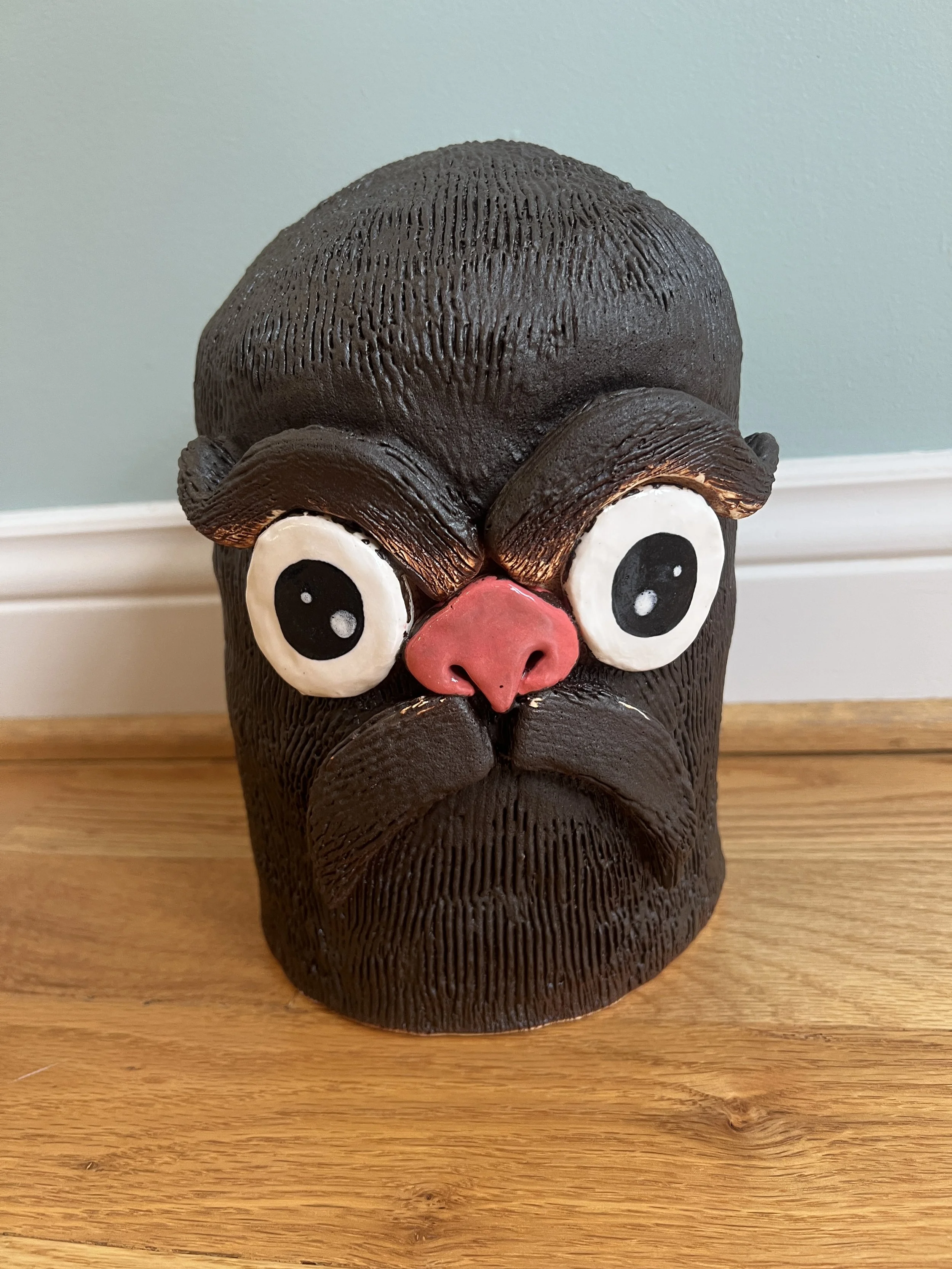Monsters
This series draws inspiration from the childhood fear of monsters lurking under the bed. Rather than depicting the terrifying creatures we imagined as children, I reimagine these monsters with a playful twist—infusing them with bright colors, exaggerated expressions, and a sense of humor. The result is a lighthearted exploration of childhood fears transformed into something whimsical, welcoming, and fun.
Family Portrait , 2025
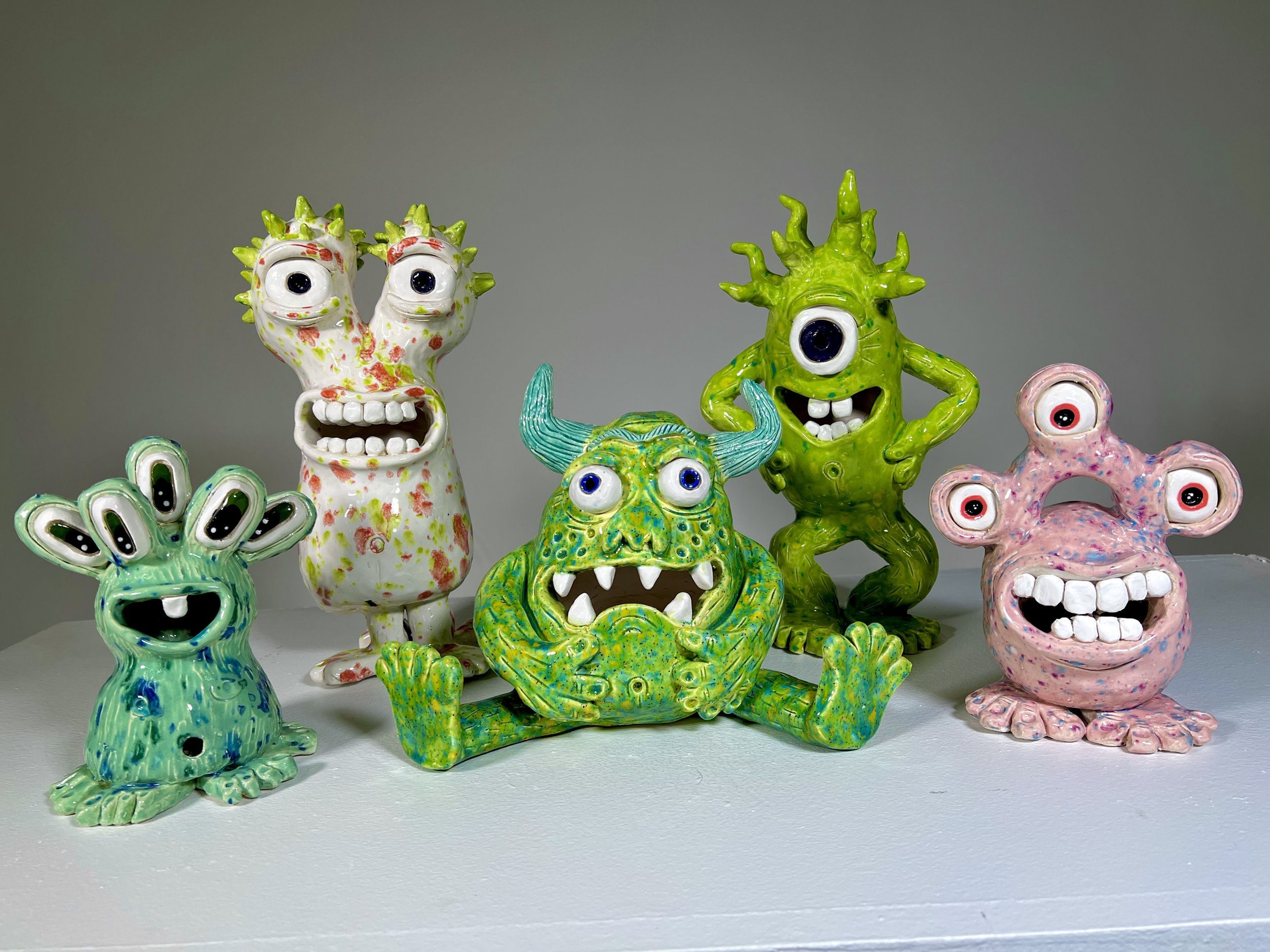
Gally
2025
6 in x 5 in x 12 in


Pickles
2025
5 in x 4 in x 12 in


Frank
2025
6 in x 6 in 7 in


Glover
2025
5 in x 5 in x 6 in


Belch
2025
10 in x 8 in x 7 in

Shank
2025
6 in x 6 in x 8 in


Julep
2025
5 in x 4 in x 7 in



Bingo
2025
6 in x 5 in x 6 in




Moco
2025
6 in x 7 in x 5 in


Zilch
2025
7 in x 6 in x 6 in



Sola
2025
4 in x 5 in x 5 in



Ruckus
2025
4 in x 4 in x 4 in


"Fonky"
2024
13 in x 14 in






Mythical Creatures
Nurikabe
2025
8 in x 6 in x 13 in
Origin: Japan
Nurikabe is a Yōkai—a type of supernatural being from Japanese folklore. Unlike malevolent spirits or helpful deities, Nurikabe exists in a more ambiguous space. He isn’t aggressive, nor is he benevolent; he’s simply an obstacle. His name roughly translates to “plaster wall,” “Mr. Wall,” or simply “The Wall,” and his purpose is just that: to block the way.
In physical form, Nurikabe is often imagined as a towering, imposing figure. However, he also manifests as an invisible barrier that travelers unexpectedly encounter. He’s said to be too tall to climb over, too wide to walk around, and too solid to break through—stretching endlessly in all directions. According to folklore, the only way to dispel him is to tap the lower left corner of his body with a stick, after which he vanishes, allowing passage.
Nurikabe was believed to explain the strange phenomenon of travelers becoming disoriented or lost during long journeys. Some accounts even describe a total loss of visibility, as if an impenetrable fog or wall suddenly enveloped the path forward. In that sense, Nurikabe is less of a creature to fear and more of a mysterious symbol of delay, confusion, and the unknown.
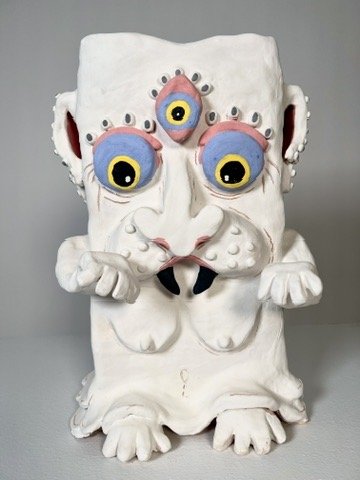
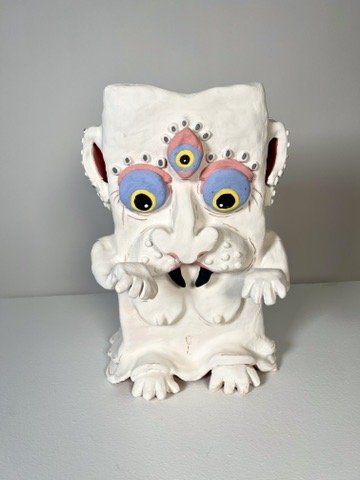


Brownie
2025
5 in x 5 in x 9 in
Origin: Scottland and England
The Brownie is a household spirit rooted in Scottish and English folklore, known for its quiet presence and helpful nature. Unlike more mischievous or dangerous mythical beings, Brownies are generally benign—choosing to live alongside humans, often in rural homes or farmhouses. They emerge at night to perform small tasks such as sweeping floors, churning butter, or finishing incomplete chores, all in exchange for a little food, usually milk or bread.
Brownies are typically described as small, elf-like figures, covered in earth-toned clothing, rustic appearance. Despite their generosity, they are extremely sensitive creatures. If offered payment or treated with disrespect—especially through gifts of clothing—they may take offense and vanish forever. Their sudden departure is often seen as both a loss and a mystery.
These spirits symbolize quiet support, unseen labor, and the value of mutual respect. The Brownie reminds us that help can come in unexpected forms, and that even small gestures of gratitude can go a long way in keeping harmony alive.




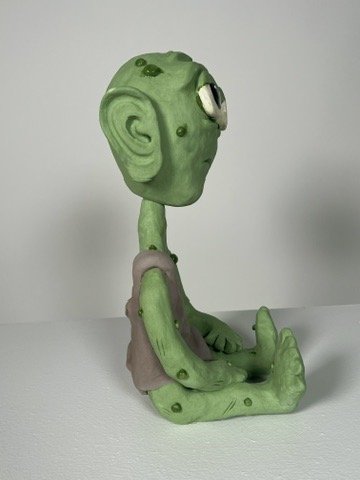

Nuppeppō
2025
13 in x 7 in x 16 in
Origin: Japan
Nuppeppō is a peculiar and unsettling figure in Japanese folklore. This yōkai is often described as a saggy, formless lump of flesh—humanoid in shape but with drooping folds of skin that obscure any distinct features. Its most unsettling trait is its face, which seems to melt into its body, and its overwhelming, foul odor of rotten flesh that precedes its appearance.
Despite its grotesque form, Nuppeppō is not considered dangerous. It is usually found wandering aimlessly through abandoned temples, graveyards, or dark city streets, often in silence. In some tales, it’s said that Nuppeppō possesses great wisdom or even medicinal properties if consumed.
Nuppeppō is an embodiment of unease, loneliness, and the grotesque aspects of the unknown. It challenges our ideas of beauty and form, standing as a quiet, lumbering reminder that not all spirits are malevolent—or even purposeful. Some simply exist on the fringes, overlooked and unsettling, yet oddly sympathetic.


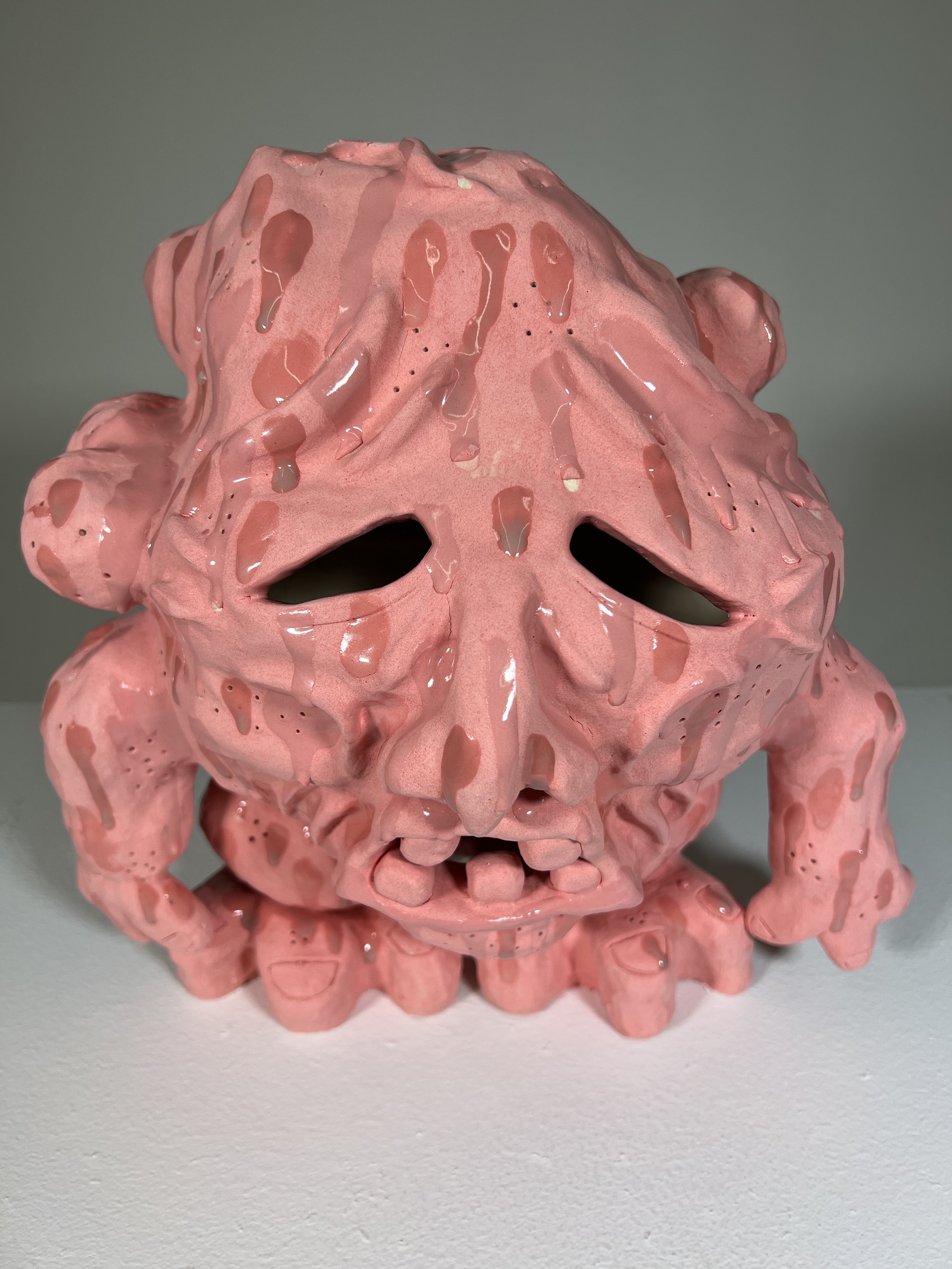

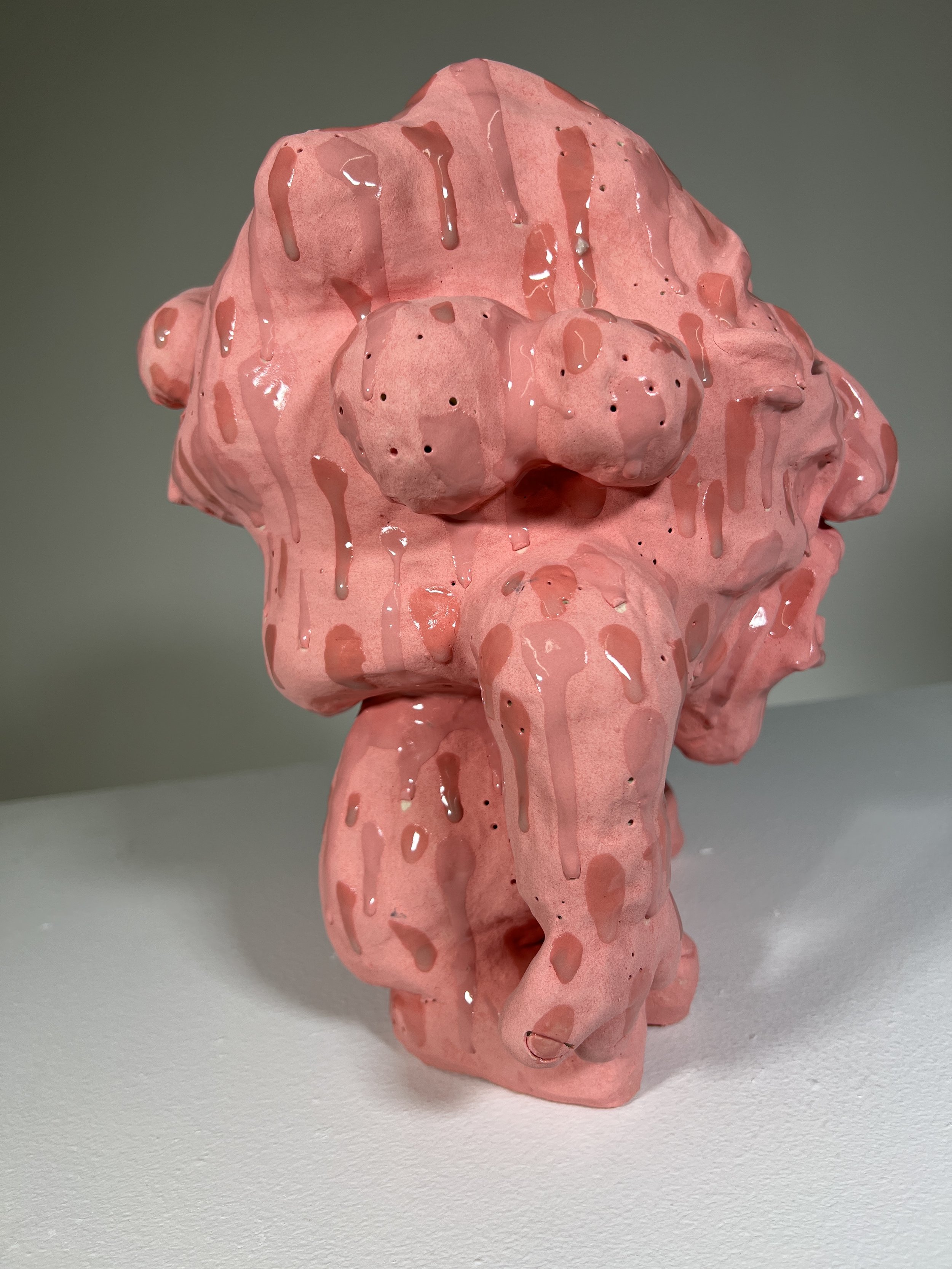


Duende
2025
6 in x 4 in x 11 in
Origin: Spain and Latin America
Often likened to gnomes or goblins, Duendes are usually depicted as tiny, humanoid beings who live hidden within homes, forests, or under the floorboards.
Their personalities vary depending on the cultural context—some Duendes are seen as mischievous tricksters who hide objects, play pranks, or lead children astray. Others are more protective, acting as quiet guardians of the household or natural world. In rural traditions, they are sometimes credited with unexplained occurrences—lost keys, moved objects, or sudden laughter heard with no clear source.
Duendes occupy a space between nuisance and caretaker, chaos and charm. Whether helpful or meddlesome, they embody the mysterious forces that live just out of sight—reminding us that the world is full of unseen magic, whimsy, and the unexplained.



Umibōzu
2025
7 in x 7 in x 7 in ; 6 in x 6 in x 6in
Origin: Japan
Umibōzu is a sea-dwelling yōkai from Japanese folklore, known for its immense size and sudden, ominous appearances. The name translates to “sea monk,” a reference to its smooth, bald head and dark, shadowy form—said to resemble that of a giant monk rising from the ocean. Stories describe Umibōzu as an unpredictable and powerful spirit, capable of capsizing ships and stirring violent storms without warning.
Often appearing on calm seas, Umibōzu embodies the fear of the unknown depths and the sudden dangers that can arise while at sea. In many legends, sailors who speak or ask questions in its presence provoke its wrath. Some versions claim that the only way to survive an encounter is to offer it a bottomless barrel—an impossible object—buying enough time to escape.
Umibōzu represents nature’s overwhelming force and mystery. It is not merely a monster, but a personification of the ocean’s vastness—a reminder of how small we are in the face of the deep.




Keukegen
2025
8 in x 8 in x 8 in
Origin: Japan
Keukegen is a mysterious and eerie yōkai from Japanese folklore, known for its small, hunched form completely cloaked in long, tangled hair. Often lurking in dark, damp corners of old homes—under floorboards or behind walls—it is closely associated with uncleanliness and illness. Though not overtly malevolent, the Keukegen is believed to bring misfortune or disease simply through its presence, making it a quiet harbinger of poor health and decay. Its name, which roughly translates to "hairy apparition," captures both its unsettling appearance and its ghostly, elusive nature. Featured in traditional yōkai bestiaries like Toriyama Sekien's Gazu Hyakki Yagyō, the Keukegen embodies the belief that neglect and disorder invite misfortune, serving as a hairy reminder of the importance of cleanliness and care in the home.

